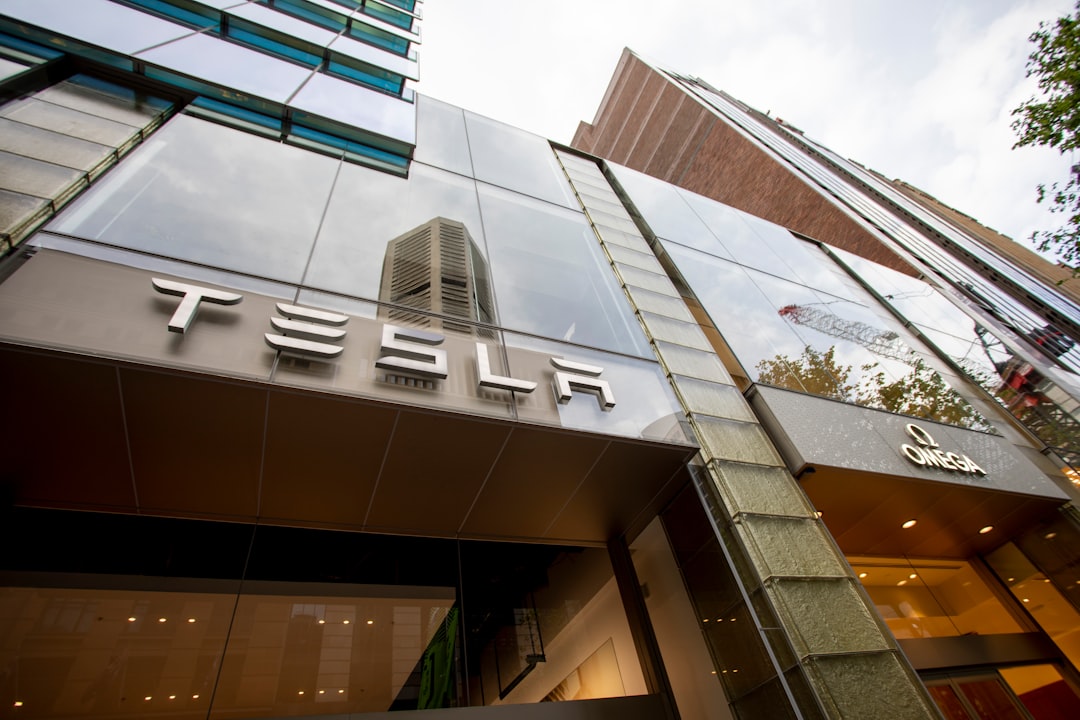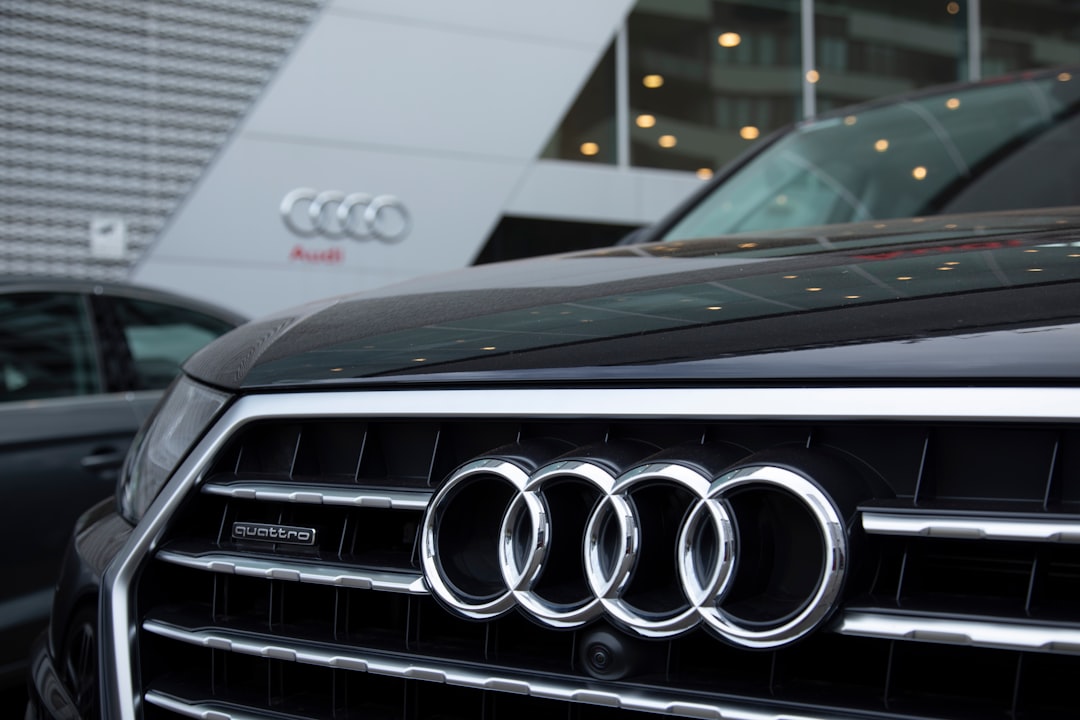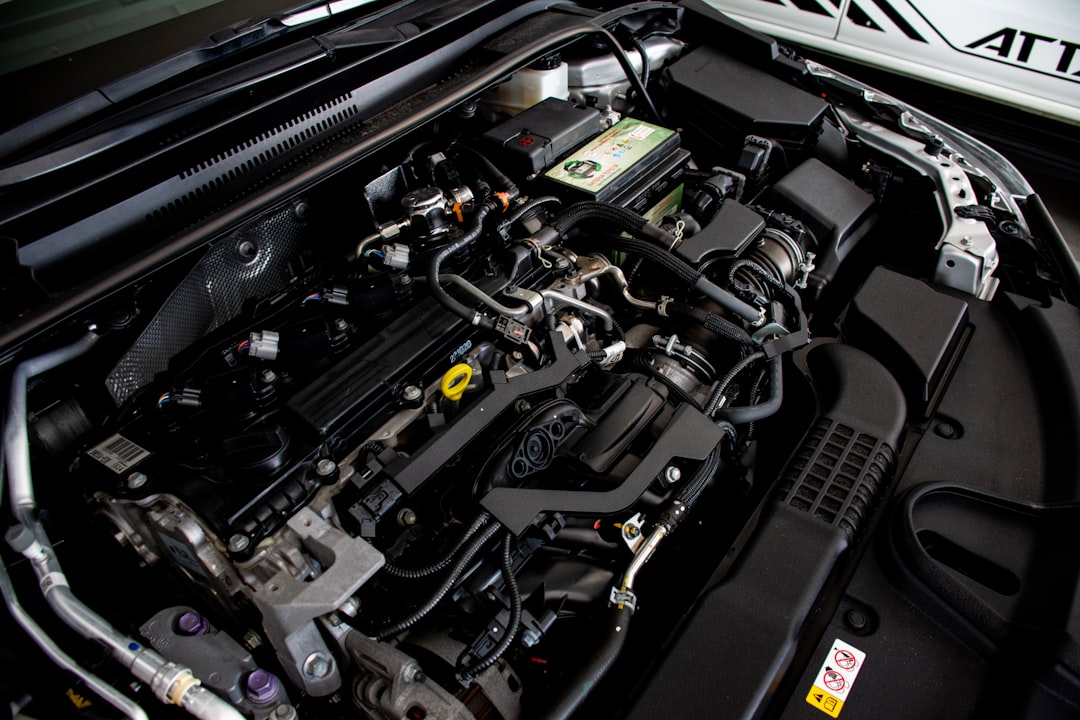

Engage prospects with a scan and streamline customer engagement with FREE QR code marketing tools by Sona – no strings attached!
Create a Free QR CodeFree consultation

No commitment

Engage prospects with a scan and streamline customer engagement with FREE QR code marketing tools by Sona – no strings attached!
Create a Free QR CodeFree consultation

No commitment
In today's digitally driven world, QR codes have rapidly evolved into a strategic asset for dealership marketing, bridging the gap between on-lot interactions and online engagement. Automotive marketers often face the challenge of missing high-value prospects when leads are not tracked in the CRM, resulting in lost opportunities. Traditional methods of capturing lead information, such as paper forms or manual sign-up sheets, create unnecessary friction and often fail to capture intent signals from customers who quietly browse or research after hours.
QR codes offer a frictionless solution to streamline test drive requests, accelerate vehicle inquiries, and collect enriched customer data directly into digital sales funnels without requiring an app download or significant staff intervention. By embedding QR codes at key dealership locations or within print and digital campaigns, teams can capture intent signals as soon as they emerge rather than waiting for a form fill or direct inquiry. This proactive approach lets sales and marketing teams act before a competitor does, addressing the challenge of unknown site visitors and unpursued leads.
This guide reveals how QR code implementation empowers car dealerships to elevate customer engagement, drive higher-quality leads, and build a data-driven foundation for long-term growth. From automotive retail showrooms to out-of-home campaigns, you will learn how to strategically deploy QR codes for measurable business impact and turn seamless customer interactions into full-funnel revenue opportunities.

Many dealerships struggle with lost opportunities caused by missed interactions, such as prospects browsing the lot anonymously or taking printed materials without ever sharing their information. QR codes bridge these gaps between physical dealership experiences and digital sales outcomes by enabling faster, more accurate lead capture and follow-up than analog processes that rely on customer initiative or staff availability.
The most effective QR strategies replace manual touchpoints with scan-driven journeys. Instead of relying on a salesperson to catch a passerby, a QR code on a window sticker can open a pre-filled test drive form, drop a cookie for retargeting, and alert the assigned sales rep. Rather than placing a stack of brochures on a podium, a dynamic QR can load an interactive model page that measures feature interest, downloads a brochure, and adds the shopper to a remarketing audience. With Sona QR, these journeys become measurable, editable, and fully integrated with your CRM.
By shifting from manual guest logs to QR-enabled journeys, dealerships can unify offline and online interactions and reduce the risk of missed outreach. Each scan feeds behavioral data directly into your growth stack, helping you identify not just leads but signals that suggest readiness to engage. As you design your QR code strategy, modern platforms support end-to-end automation, making campaign performance trackable and continually improvable.

Persistent gaps between promotional materials and meaningful customer actions are a major pain point for car dealerships. Disconnected campaigns create inconsistent messaging, leaving prospects confused or disengaged, and marketing teams often lack visibility into which channel is delivering results. QR codes address these pain points by turning every on-lot or print interaction into a measurable, actionable lead generation opportunity.
Unlike static brochures or posters, QR codes transform a fleeting glance into a measurable event that feeds your CRM with context. When a shopper scans a code on a certified pre-owned SUV to view the vehicle history, you know precisely which model and trim sparked interest. When a service customer scans a code on a counter sign to check their trade-in value, that signal routes directly to sales. This speed and clarity compress the journey from curiosity to conversion.
By transforming static materials into interactive assets, car dealerships move from reactive follow-up to proactive lead nurture. The result is a richer, more connected experience that aligns buyer interest with timely, relevant actions.

A major challenge in automotive retail is the diversity of customer journeys, ranging from anonymous lot visits to repeat service appointments. QR codes flex to meet various dealership needs, helping minimize missed opportunities across non-trivial touchpoints and capture signals that were previously invisible.
Choosing the right QR format ensures that each scan aligns with the intent of the moment. A web link might feed inventory browsing, while a pre-filled SMS could prompt an instant question to a salesperson. Dynamic codes make it easy to change destinations as offers shift or inventory sells through, ensuring your materials stay relevant without costly reprints.
Dynamic QR codes, managed through a platform like Sona QR, allow quick campaign changes without reprinting assets. Central management also makes it easier to test destinations, refresh offers, and monitor performance across codes in one place.

Many dealerships unknowingly face lost opportunities because signals such as content consumption or after-hours lot visits are never captured. Strategic QR code placement ensures every stage of the buyer journey offers an opportunity to convert attention into pipeline.
Think about your highest-traffic physical assets and the moments that already trigger curiosity. If most shoppers walk the lot before talking with a salesperson, window stickers should be the first priority. If your service lane is bustling, aim QR codes at upsell and trade-in evaluations. If your local market responds well to direct mail, bridge print to digital with personalized QR journeys that tag scan source.
Matching QR placements to high-traffic assets bridges lead capture gaps and accelerates pipeline movement. The goal is clear: meet shoppers where they already are, then use scans to guide and document the next best action.

Many dealerships experience delayed responses to potential leads because engagement signals like brochure pickups or service counter interest go untracked. QR codes make these moments visible and actionable, ensuring marketing and sales respond in context and on time.
When QR codes launch purpose-built landing pages with short forms, shoppers feel in control and staff receive complete, structured data instantly. You can automate follow-ups and track which use cases generate the most qualified demand. Over time, this data shows which vehicles, promotions, or services convert best.
By replacing manual processes with instant, measurable digital actions, dealerships consistently capture signals of intent. Those signals fuel smarter nurturing, better timing, and stronger conversion rates.
A challenge in automotive marketing is the inability to retarget leads unless a full form is submitted, which excludes many anonymous shoppers. Every QR scan captures valuable context like engagement source, buyer stage, and location. Modern solutions such as Sona QR flow this data directly into retargeting audiences so you can prioritize outreach based on browsing behavior and moments of intent.
Segmenting by scan behavior gives you practical levers. A shopper who scans a code on an EV model page should not receive the same ads as a customer who scans a service counter code about tire rebates. When you map scan events to buyer stages, your messages feel helpful instead of generic.
With automated tracking and enrichment, dealerships avoid the issues of siloed systems and achieve consistent audience building. The result is higher relevance, better timing, and more efficient ad spend.
Dealerships often struggle with fragmented campaigns, resulting in inconsistent experiences and unclear attribution. QR codes unify offline and digital efforts by making every touchpoint actionable and measurable, eliminating disconnects that frustrate teams and confuse buyers.
When QR codes become standard across print, in-store signage, events, and paid media, your funnel gains a clear onramp at every stage. Use a centralized platform like Sona QR to manage links, test offers, and keep analytics consistent across channels. This approach ensures that once a shopper scans, every subsequent step is aligned to their needs and your goals.
QR codes serve as the offline onramp to your digital marketing engine. They also unlock a new layer of data collection across channels that historically were tough to measure. With Sona QR, you can manage all your codes, monitor performance, and sync scan data to your CRM and ad platforms.
Without a repeatable execution process, campaigns risk incomplete attribution and lost leads. Use this checklist to design, deploy, and optimize with confidence while keeping every stakeholder aligned.
Approach each step with the end in mind: what action should the shopper take, and what data will confirm success. Then standardize the assets and workflows so you can scale across vehicles, offers, and locations without reinventing the wheel.
Clarify what you want the shopper to do and how you will measure it. Common goals include increasing test drive bookings, driving trade-in appraisals, boosting digital brochure views, and capturing service-to-sales opportunities.
Map the use case to a specific touchpoint, audience, and outcome. For example, a QR code on a certified pre-owned sedan’s window sticker could focus on test drive booking, while a counter display in service might offer trade-in valuations. Document your primary KPI and one or two secondary KPIs to avoid measurement sprawl.
Choose the format that best aligns with the intended action and the environment. For discovery and research, a web link to an inventory page or model hub will be appropriate. For quick outreach to a salesperson, an SMS or email QR can launch a pre-filled message.
Dynamic QR codes are ideal for most dealership campaigns because they are editable, trackable, and support A/B testing. Static codes are suitable for evergreen content such as your homepage or a general service menu. When in doubt, default to dynamic to preserve flexibility and capture data via Sona QR.
Design for clarity and scannability. Use a high-contrast code, include your logo, and frame the code with a branded border. Add a direct call to action near the code that tells shoppers exactly what they will get, such as Scan to book a test drive or Scan for today’s APR offers.
Test across devices, angles, and lighting conditions used on your lot and in your showroom. Validate that the landing experience is mobile-first, loads quickly, and routes the captured data into your CRM. If your dealership group serves multiple stores, confirm that store-specific routing works properly.
Prioritize placements that align with shopper behavior data. Window stickers and showroom displays reach walk-ins, service counters reach existing customers, and direct mail reaches households considering purchase or service. For out-of-home, use short copy and large codes to simplify scanning from a distance.
Roll out codes in batches so you can measure early performance and make design or CTA tweaks before expanding. Keep a deployment log with code IDs, location, intended action, and owner. This enables quick troubleshooting and clear accountability.
Set up dashboards in Sona QR to track scans by time, device, location, and campaign. Connect the destination pages to analytics with UTM parameters and goals. Configure alerts for hot leads, such as a scan on a high-interest vehicle that triggers immediate rep outreach.
Optimize regularly. Test new CTAs, adjust placement height or size, and experiment with incentives like free accessories with test drive. Feed learnings back into your creative and media plans. The objective is to build a repeatable loop from insight to iteration to impact.
Each step supports attribution and timely responsiveness, preventing lost opportunities and maximizing ROI. When you follow this checklist consistently, you build a durable playbook that scales across models, seasons, and markets.
A common challenge is linking in-person engagement to actual sales because traditional tracking often stops at the scan. Advanced analytics solutions now bridge this gap by tying scan events to downstream actions such as form fills, calls, showroom appointments, and closed deals in your CRM.
Sona QR captures scan metadata like timestamp, device, and location, while Sona.com resolves anonymous activity to known buyers over time and stitches events together into a complete buyer journey. This gives your team a definitive view of what drives pipeline and what needs improvement, all the way from the lot to the ledger.
This level of insight enables smarter investments, clearer accountability, and a continuous improvement cycle that compounds results over time.
Failure to personalize or measure engagement often leads to missed opportunities. You can boost adoption and ROI by aligning QR use cases with buyer needs and by training frontline staff to introduce QR touchpoints naturally into conversations.
Aim for instant value. Make sure every scan delivers something useful within seconds, such as a booking confirmation, a saved contact, a tailored offer, or an appraisal estimate. The faster the payoff, the higher the scan rate and the better the conversion.
With real-time integrations and a culture of testing, these practices maximize engagement and lift downstream sales conversion.
Real stories show how QR codes can turn overlooked touchpoints into growth drivers. They also provide creative clues on how to present the offer and how to measure success without overcomplicating the process. Watch a video tutorial for practical setups.
Consider piloting a few of these ideas and tracking their impact over 30 to 60 days. Use the results to inform how you scale across models, stores, and seasons.
These examples show how making previously invisible signals actionable can lift marketing performance and improve the customer experience at the same time.
Success depends on surfacing key engagement moments and tracking every action. The best campaigns align destination content with buyer intent, minimize steps, and follow through with timely human or automated outreach.
Common pitfalls often come down to execution details. Codes that are too small, placed too low, or missing a clear promise will not get scanned. Destinations that load slowly or demand too much information will cause drop-off. Avoid these mistakes by testing in real conditions and iterating quickly. For inspiration, explore innovative QR advertising.
By staying proactive and data-driven, dealerships can avoid fragmentation and under-measurement, building repeatable success across campaigns and channels.
QR codes have become more than a technical novelty; they are now a vital strategy for modern car dealerships determined to capture every high-value lead and eliminate the blind spots of traditional marketing. By transforming every print or physical channel into a digital onramp, dealerships engage prospects instantly, track interactions at formerly unmapped moments, and dramatically reduce the risk of lost follow-up.
Whether you are modernizing lot signage, enhancing direct mail, or empowering sales with actionable data, QR code campaigns provide measurable growth and close persistent attribution gaps. With Sona QR and Sona.com, you can capture real-world engagement at the source, stitch it into buyer journeys, and tie scans to revenue. Advanced analytics, timely lead capture, and surfacing purchase intent signals empower automotive marketers to grow smarter and faster, turning every customer interaction into an opportunity for revenue and stronger relationships.
Dealerships that adopt these practices position themselves ahead of industry disruption and are ready to deliver connected, data-driven experiences that buyers appreciate. Start small, measure everything, and scale the plays that prove their value. Start creating QR codes for free.
QR codes have transformed car dealerships from traditional lead capture methods into dynamic, data-driven growth engines. Whether it’s acquiring more qualified leads, enhancing the customer journey on the lot, or streamlining follow-ups, QR codes enable instant, mobile-friendly connections that turn every interaction into a measurable opportunity. Imagine knowing exactly which showroom displays or test-drive offers generate the most interest—and acting on that insight in real time.
With Sona QR, creating dynamic, trackable QR codes is effortless. Update your campaigns instantly without the hassle of reprinting, monitor engagement down to each scan, and seamlessly connect leads to your sales funnel. No lost prospects, no guesswork—just smarter, more efficient lead capture that drives revenue.
Start for free with Sona QR today and turn every scan into a new customer and every visit into a sale.
QR codes provide a frictionless way for customers to request test drives, access vehicle information, and engage with personalized offers instantly, enhancing convenience and interaction without needing app downloads or staff assistance.
Incorporating QR codes enables dealerships to capture enriched customer data in real time, track engagement across offline and online channels, reduce lost leads, personalize follow-up, and measure campaign performance for better ROI.
QR codes capture detailed scan metadata like time, location, and device, link scan events to CRM records, and connect these interactions through multi-touch attribution to sales and revenue, providing a complete view of the buyer journey.
Dealerships can use QR codes for after-hours test drive scheduling, trade-in value assessments at service counters, digital vehicle brochures on printed materials, accessory contest engagement in showrooms, and linking out-of-home ads to personalized offers.
By placing QR codes strategically on window stickers, showroom displays, service counters, and marketing materials, dealerships capture intent signals early, automate follow-ups, personalize offers, and provide instant value, resulting in faster lead conversion and better customer experiences.
Use Sona QR's trackable codes to improve customer acquisition and engagement today.
Create Your FREE Trackable QR Code in SecondsJoin results-focused teams combining Sona Platform automation with advanced Google Ads strategies to scale lead generation

Connect your existing CRM

Free Account Enrichment

No setup fees
No commitment required

Free consultation

Get a custom Google Ads roadmap for your business






Launch campaigns that generate qualified leads in 30 days or less.
